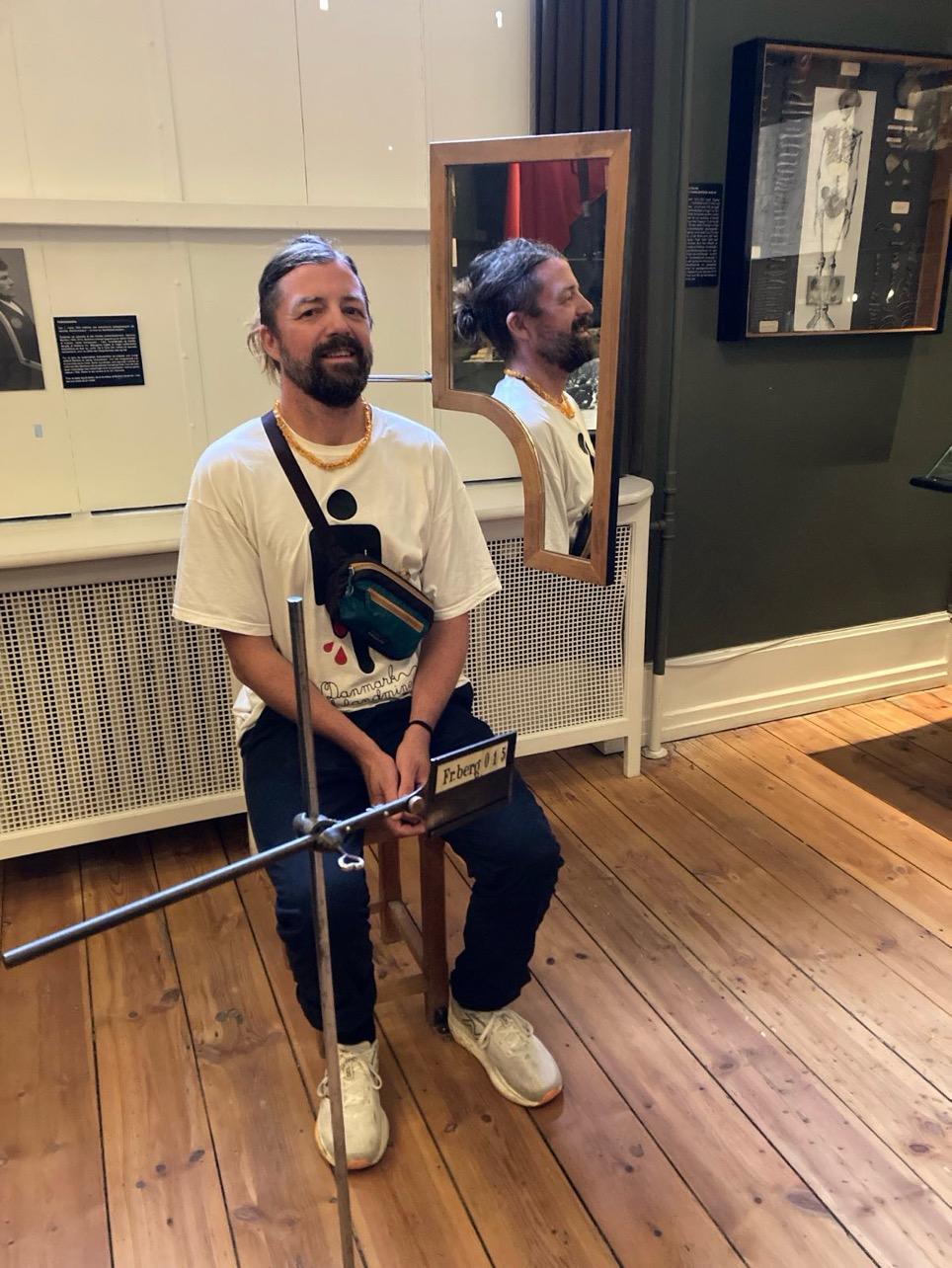The case of anthropometry

The image depicts not just Rune Saugmann Andersen, the Principal Investigator of the UNDO project, but also one of the first facial recognition systems ever made by the police. Concretely, what you are seeing is an exhibition in the police museum in Copenhagen of where and how the Danish police photographed suspects at the turn of the last century. The relation between this and facial recognition is that the Danish police a hundred years ago did not just take the classical “mugshot” photo, but also that this process included a range of specific ways to measure the face of a suspect for purposes of identification.
This latter endeavor was the applied part of a science called anthropometry. Anthropometry received its name from the Greek words for human (“Anthro”) and measurements (the “metry” bit in the word), which helpfully explains what it concerned. Anthropometry became institutionalized in the Danish police in the year 1900 as part of a wider attempt to measure the human body for the purposes of identifying and classifying perpetrators, something which also included fingerprinting techniques. The Danish police became forerunners in these innovations, and some of their members became internationally famous experts.
Moreover, the process by which facial measurements were taken can be traced in the image above. Note the mirror to the right-hand side of Rune’s face, through positioning the mirror in this way only a single photograph was needed to capture both the front and side of a person’s face. Furthermore, the board with the number of the photograph/suspect makes it possible to find the correct image again and link it to an individual. Lastly, and what cannot be seen in the image, is that the chair Rune is sitting on has a raised inverse V-shape, circa three centimeters high, running the length of the middle of the chair to make the suspect sit up with their backs straight…
Alongside these techniques to produce a clearly identifiable photograph, with a minimum of resources, anthropometry supplied in-depth details on how to measure every part of a face. For instance, there were measurements and classifications for the ears, nose, mouth, eye shape and so on. This sort of biometric technique is the analog antecedent of modern facial recognition. It was used for precisely the same purposes, to connect and identify individuals by the police. If a person from Copenhagen was arrested in west Denmark, for instance, the police in the periphery could contact the capital police with the specific measurements they found on an individual and ask if it really was the Morten Jensen from Copenhagen that they had in custody or if the measurements did not add up.
These measurements were also used to predict crime through classifying criminals into different types with a natural inclination for certain kinds of crimes. For instance, a particular type of facial structure was linked to the person being an “international fraudster.”
What is important in this story is how it speaks to the relation between technoscience and policing. In the 1900’s, Danish police became famous in police circles due to innovations such as anthropometry and finger printing. In the modern day, the same sort of attempts at using modern technoscientific innovations are appearing in the guise of facial recognition which builds on, modernizes and innovates what began already more than a century ago. For instance, the idea of using photographic material to predict crime is generally not connected to facial structure anymore, but there are cameras that attempt to predict criminal action based on machine interpretations of gait, movement or action by individuals or groups. So, the same ideas tend to reappear in new guises, the same historical clothes are modernized and reinvented.
That different technosciences have a history does not mean that there are not vital differences with the past and today. For instance, today the Danish police increasingly import new innovations rather than exporting them. And this is a process which often involves private actors who develop technologies that they sell. What we try to do in UNDO is to try to trace exactly these continuities and breaking points, this historical knowledge is key to understanding how this digital order functions in the contemporary situation we are in today.
By Björn Karlsson
